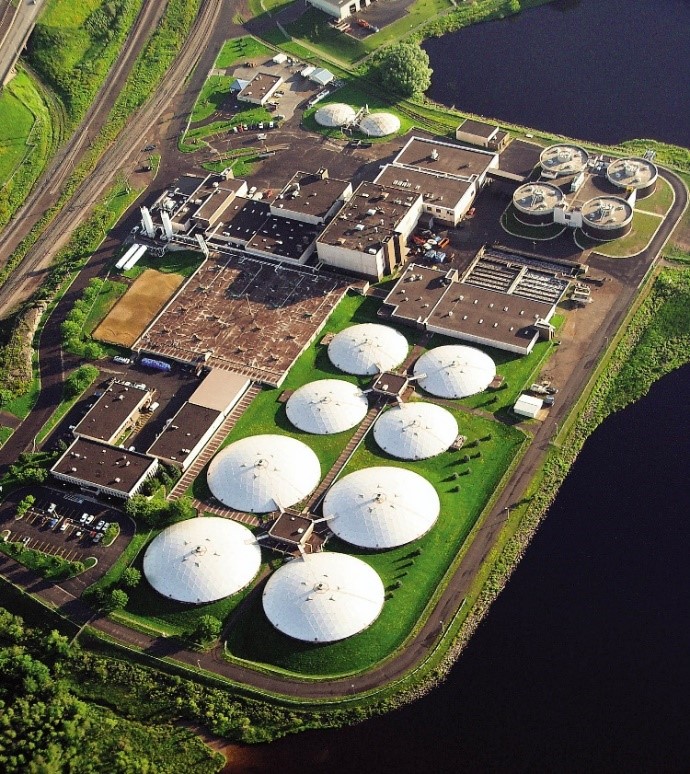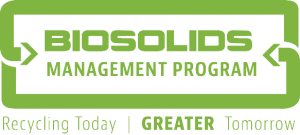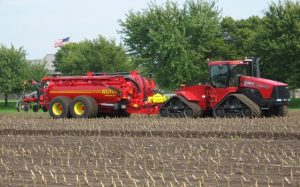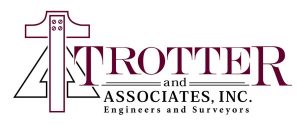 Join CSWEA
Join CSWEA
Biosolids Land Application Program
Western Lake Superior Sanitary District
Duluth,Minnesota
Avg. Flow 40 MGD
WLSSD moved from incineration to land application of sludge in the 1990s. In 2001 a TPAD (temperature phased anaerobic digestion) facility was started up resulting in the production of Class B biosolids as well as generation of valuable biogas used to generate heat and electricity for the treatment plant. The biosolids produced at WLSSD are named Field Green®. More than 20,000 tons of Field Green® are produced each year, all of which are spread on land as fertilizer. Land application sites are farm fields (approximately 80%) and mine land reclamation areas (approximately 20%) located primarily in Carlton and St. Louis counties, MN and Douglas County, WI. The Field Green® program is 100% internally staffed.
Land application of biosolids returns beneficial nutrients and organic matter back to the soil, reduces the need for commercial fertilizers, improves yields and forage quality, and keeps a valuable resource out of landfills. Each year over 100 tons of Nitrogen and Phosphorous and over 10 tons of Potassium are beneficially re-used. One example of the effectiveness of Field Green® as a fertilizer is with grass hay. An economic study concluded that grass hay yields doubled and profits increased on fields fertilized with Field Green®. A Minnesota Extension study found that the protein content of the hay increased 26% and relative feed values increased 10 percent, reducing or eliminating the need for feed supplements for cattle producers.
The WLSSD Biosolids Sustainability Master Plan provides a roadmap for the future direction of the program. As WLSSD proceeds with goals to increase biogas production through co-digestion (Phase 3 of WLSSD’s Combined Heat and Power Energy Project), process modifications to produce Class A biosolids may be considered and any generation of additional biosolids or changes in biosolids composition will need to be managed as part of WLSSDs strategic plan towards energy self-sufficiency.

Biosolids Management Program
St. Cloud Wastewater Treatment Facility
ADF: 10MGD
Class B Liquid Biosolids; ~1200 DT/Y
The City of St. Cloud Wastewater Treatment Facility is located in the southern portion of the City of St. Cloud and provides regional wastewater conveyance and treatment services to six cities. The facility operates 365 days a year and is staffed 24 hours a day. The facility is permitted to treat and discharge 18 million gallons per day to the Mississippi River. In 2016, the average daily flow was 9.8 million gallons a day.
The high quality and highly sought after biological fertilizer produced at the facility is provided to local farmers at no cost. Biosolids Management Program reports annually to the Minnesota Pollution Control Agency and strictly follows land application rules including site approval requirements, setbacks from water bodies and public access restrictions.

In 2011, the facility applied to and was accepted to the National Biosolids Partnership (NBP), Environmental Management System (EMS) and the City Council officially committed to the EMS and the Code of Good Practice. The voluntary participation in this program demonstrated the City’s commitment to continual improvement. In 2014, the City’s Biosolids Management Program was awarded Platinum status and is currently one of 29 platinum level agencies in the Nation.
In 2014, the Wastewater Treatment Facility initiated its Resource Recovery and Energy Efficiency (R2E2) Master Plan. Additional recovery and reuse opportunities were identified during the plan development, related to biosolids operation and maintenance.
In 2016, construction started on the Biofuel Recovery Project. Biofuel conditioning equipment and a 633kW Jenbacher biofuel generator were installed at the facility. The biofuel generated as part of the solids processing step at the facility is being converted into electrical energy. Currently, the biofuel generator is producing approximately 75% of the electrical demand at the facility.
The Nutrient Recovery and Reuse (NR2) Project is an additional project identified in the 2014 R2E2 Master Plan. The NR2 Project consists of installation of dewatering of Class B biosolids to 15% cake, lysing of caked biosolids to produce a pumpable Class A, 15% liquid and nutrient recovery to produce struvite fertilizer. Construction is anticipated to start summer of 2017.

To provide a Water Environment Federation (WEF) organization (Illinois, Minnesota, Wisconsin) offering multiple opportunities for the exchange of water quality knowledge and experiences among its members and the public and to foster a greater awareness of water quality achievements and challenges.




